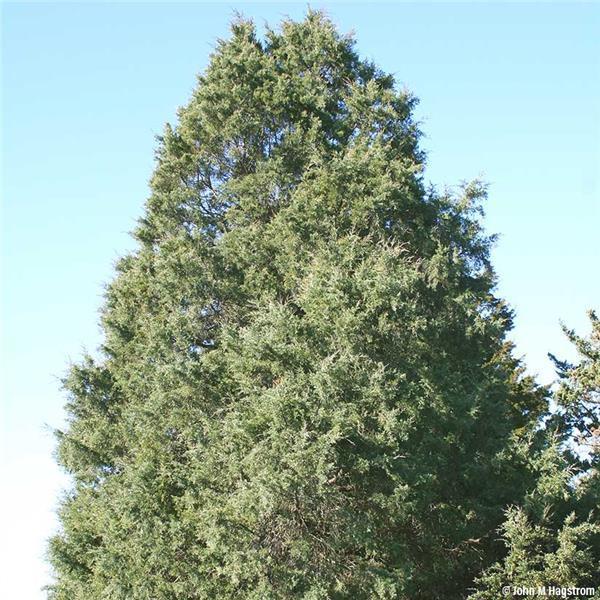
Eastern Red Cedar
This is the EASTERN RED CEDAR. The eastern red cedar is not actually a cedar tree, but a juniper tree. True “cedar trees” are found in the Mediterranean regions while eastern and western red cedars grow in the United States.
The eastern red cedar is considered to be a “pine tree” or “conifer.” It can grow to a height of 40 to 50 feet with a canopy spread of 8 to 20 feet at maturity. The small, spiky leaves have scales and sawtooth serrations. The reddish-brown bark has a “hairy” appearance. These “hairs” on the tree trunk can be gently pulled off to make a tender bundle for lighting a campfire.
The eastern red cedar prefers full sun and is tolerant of most soil types from riverbanks to dry, rocky slopes. Its habitat ranges from east of the Great Plains from southern Canada to Florida and west to Texas.
The dense, pyramid shape of the tree provides excellent windbreak and screens on property lines. Years ago, wood from red cedars was used to make pencils. Today, red cedar wood is used for closet paneling, cedar chests, and even fence posts. The red cedar tree is used to manufacture bold fragrance oils that are not only pleasant smelling but can also repel insects. Not only are these trees useful for humans, but they are helpful to many animals as well. Songbirds enjoy the cedar berries during the winter, while owls like to make their home in the branches. Deer are known to use these trees for food and shelter. Birds such as sparrows, robins, mockingbirds, juncos and warblers frequently make their nests in red cedar trees. Cedar waxwing birds love to eat the fruit of the red cedar.
The eastern red cedar is the state “evergreen” tree of Tennessee.
-
Welcome, by Benjamin James
-
Bald Cypress
-
Southern Magnolia
-
Red Mulberry
-
American Sweetgum
-
Eastern Red Cedar
-
Sweetbay Magnolia
-
American Elm
-
Longleaf Pine
-
Black Gum
-
Willow Oak
-
Loblolly Pine
-
Live Oak
-
American Sycamore
-
Water Oak
-
Red Maple